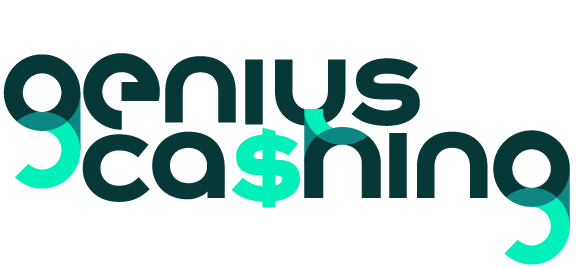The Capital Paradox: Why High Revenue Businesses Still Struggle to Raise Funds

The Capital Paradox describes the baffling situation where high-revenue businesses face significant difficulty securing funding in 2025.
Anúncios
Conventional wisdom suggests that robust sales should guarantee investment, but this is increasingly untrue. Investors prioritize sustainable growth, efficiency, and defensibility over mere top-line numbers.
The modern funding landscape has shifted its focus from sales volume to profitability kinetics and unit economics.
A large revenue stream is meaningless if the associated customer acquisition costs are cripplingly high. Understanding this paradox is crucial for any entrepreneur seeking expansion capital today.
Why Is Revenue Alone Not Sufficient for Investment in 2025?
Investors today view revenue as only one variable in a complex financial equation. They are wary of vanity metrics that mask fundamental flaws in the business model. The market demands evidence of efficient growth.
Anúncios
High revenue often signals high operational spend to achieve those numbers. If a business spends $1.10 to generate $1.00 in sales, the revenue is an indicator of failure, not success.
++ Red Tape Breakdown: What Slows Down Benefit Processing (and What You Can Do)
What Role Do Unit Economics Play in Investor Scrutiny?
Unit economics scrutinize the profitability of a business on a per-customer or per-product basis. Key metrics include Customer Lifetime Value (CLTV) versus Customer Acquisition Cost (CAC).
If the CAC is too high, the high revenue is simply purchased growth. The Capital Paradox shows that investors will reject high-revenue firms with poor unit economics because they are inherently unprofitable at scale.
Also read: When to Seek Capital and When to Wait
Why Are Investors Focusing on the “Quality of Revenue”?
Not all revenue is created equal. Investors prefer high-margin, recurring revenue streams, such as subscriptions or long-term service contracts. These signal predictable future cash flow.
Transactional, one-off sales even large ones are seen as less valuable. They require the company to constantly restart the sales engine, increasing future financial risk and instability.
Read more: How to Prepare Financial Statements for Investors
How Does Gross Margin Define Investment Attractiveness?
Gross margin (revenue minus Cost of Goods Sold/Services) is a direct measure of efficiency. Low gross margins indicate a business with little pricing power or high production costs.
A business with high revenue but a 10% gross margin leaves little room for operational expenses or profit. Investors seek businesses with margins that clearly demonstrate scalability.

What Are the Hidden Financial Traps Behind High Revenue?
High revenue often conceals significant financial weaknesses that scare away sophisticated capital. These traps are frequently related to working capital cycles and debt obligations. Entrepreneurs must manage these vulnerabilities proactively.
The perceived success of high sales can lead management to overlook critical operational inefficiencies. The Capital Paradox is fundamentally rooted in a lack of internal financial discipline.
How Does the Working Capital Cycle Create Funding Gaps?
High-revenue businesses often face a working capital crunch, especially in sectors with slow payment terms (e.g., government contracts). They pay their suppliers immediately but wait 90 days for client payment.
The company needs capital to bridge this gap. This is a sign of operational growth outpacing cash reserves. The business looks profitable on paper but lacks cash liquidity for immediate needs.
What is the Danger of Revenue Concentration?
Revenue concentration occurs when a large percentage of sales comes from a single customer or a small group of customers. While this boosts the top line, it creates immense counterparty risk.
If that one major client leaves, the entire high-revenue model collapses instantly. Investors will reject this structural fragility, seeing the business as an overly exposed single point of failure.
Why Is Scaling Too Fast a Red Flag for Banks?
Rapid, high-revenue growth often requires aggressive spending on inventory, staffing, and technology. This high burn rate leads to significant and immediate negative cash flow.
While venture capital sometimes tolerates this, banks and traditional debt providers see it as recklessness. They prefer slower, more deliberate growth that prioritizes cash preservation.
How Does the Lack of a Clear Exit Strategy Detract from Value?
Investment capital, particularly private equity or venture capital, requires a defined path to liquidity. Without a clear, believable exit strategy (IPO or acquisition), the investment is merely locked up indefinitely.
The high revenue may be attractive, but if there’s no way for investors to cash out at a significant multiple, the opportunity is dismissed. Value is tied to realization, not just accumulation.
Why Are Niche Markets Often Seen as Less Attractive?
A business dominating a niche market might generate high revenue within that niche. However, if the total addressable market (TAM) is small, future scaling is limited.
Investors want large, global growth potential. A high-revenue business that has already saturated its small market provides no viable path for the 10x return sought by private equity.
What is the Investor’s View on Competitive Moats?
A competitive moat is a structural advantage that protects long-term profitability from rivals. High revenue without a moat (patents, network effects, brand loyalty) is easily eroded by new entrants.
Without defensibility, investors fear that competitors will simply copy the business model and undercut pricing. The Capital Paradox is a story of unprotected success.
The E-Commerce Drop-Shipper Scenario
Consider an e-commerce drop-shipper with $5 million in annual sales. Their revenue is high. However, their CAC is 30% of sales, their gross margin is 40%, and they have zero proprietary technology.
This lack of control and high customer churn means the business is just a marketing machine. Investors see high revenue but no valuable, scalable intellectual property or competitive moat.
| Funding Source | Focus Metric | Investor/Provider Preference | Key Risk Factor for the Business |
| Venture Capital (VC) | Future TAM, Exit Strategy, CLTV:CAC | High-Growth Potential, Technology Moat | Equity Dilution, Pressure for Rapid Scale |
| Traditional Bank Debt | Collateral, Historical Profitability | Low Risk, Strong Assets, Low Debt Ratios | Fixed Repayment, Restrictive Covenants |
| Revenue-Based Financing (RBF) | Gross Revenue Predictability, Cash Flow | Flexible Repayment, Non-Dilutive Capital | High Cost of Capital, Revenue Clawback |
| Asset-Based Lending (ABL) | Accounts Receivable Quality, Inventory Value | Current Liquidity, Verified Assets | Loss of Assets if Default Occurs |
Which Funding Alternatives Are Suited for Revenue-Heavy Businesses?
Businesses struggling with The Capital Paradox often need to pivot their funding strategy away from traditional venture capital. They are often too mature for early-stage VC but too growth-focused for traditional bank loans.
Alternative financing methods prioritize current cash flow and business assets over speculative future valuation. They offer flexibility suited to firms with reliable, if low-margin, income.
How Does Revenue-Based Financing Work?
Revenue-Based Financing (RBF) involves receiving capital in exchange for a percentage of future gross sales. The repayment fluctuates monthly based on the company’s performance.
This method avoids equity dilution and complex valuation debates. It is ideal for high-revenue businesses with predictable sales cycles but poor working capital management.
What Role Does Asset-Based Lending Play?
Asset-Based Lending (ABL) allows a business to secure loans using its existing assets as collateral. These assets typically include accounts receivable (invoices) and inventory.
This directly addresses the working capital gap. ABL provides immediate liquidity based on current, verifiable revenue and assets, bypassing scrutiny of long-term profitability models.
The SaaS Company and RBF
A Software-as-a-Service (SaaS) company generates $10 million in revenue but requires $2 million immediately to hire a specialized sales team. Instead of selling 15% of the company to VC, they use RBF.
They agree to pay 8% of monthly revenue until a pre-determined cap (e.g., $2.4 million) is met. This maintains ownership while providing immediate, growth-critical capital.
Conclusion: Mastering the Metrics Behind The Capital Paradox
The Capital Paradox is a potent reminder that revenue is simply the starting point, not the destination, in the capital conversation.
The high-revenue firm that struggles for funding is likely suffering from poor unit economics, inadequate moats, or critical working capital deficits.
The solution requires entrepreneurs to shift the narrative. Focus not on what you sell, but on how efficiently you sell it, the quality of that revenue, and the defensibility of your model.
By mastering CLTV, CAC, and cash flow, you transition from being a high-revenue liability to a highly sought-after investment.
Are you tracking profitability per customer, or just total sales? Understanding this difference is the key to unlocking true investment potential. Share your experiences with RBF or ABL in the comments below.
Frequently Asked Questions
What is the difference between Revenue-Based Financing (RBF) and Venture Debt?
RBF repayment is based on a percentage of gross revenue, making it flexible. Venture Debt is a standard loan, usually with warrants (equity options), based on a fixed repayment schedule.
Is The Capital Paradox the same as the “valley of death”?
No. The “valley of death” describes the stage where a startup has proven the technology but lacks funds to commercialize. The Capital Paradox applies to established businesses with high, visible sales that still can’t raise growth capital due to inefficiency.
What is a “competitive moat”?
A competitive moat refers to the structural advantage that protects a business’s long-term profits and market share from competition. Examples include brand strength, network effects (like social media), or proprietary technology/patents.
What is the average CAC-to-CLTV ratio VCs prefer?
Venture Capitalists typically prefer to see a CLTV (Customer Lifetime Value) that is at least three times greater than the CAC (Customer Acquisition Cost). A ratio below 3:1 is often considered a red flag.
How can a business with high revenue prove its efficiency?
The most effective way is through transparent cohort analysis. This shows how recently acquired customers behave over time: how long they stay, how much they spend, and how quickly the initial CAC is recovered.
